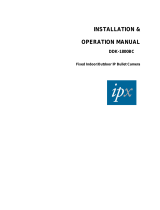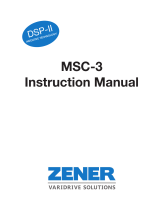Renesas H8SX is an advanced 32-bit microcontroller with a built-in USB interface and a wide range of peripherals. It is ideal for applications that require high performance, low power consumption, and easy connectivity.
With its powerful CPU core and豐富的on-chip peripherals, the H8SX can handle a variety of tasks, from simple control loops to complex data processing. The built-in USB interface makes it easy to connect the H8SX to a PC or other USB devices.
The H8SX is also very power efficient, making it ideal for battery-powered applications. It has several power-saving modes that can be used to reduce power consumption when the device is not in use.
Renesas H8SX is an advanced 32-bit microcontroller with a built-in USB interface and a wide range of peripherals. It is ideal for applications that require high performance, low power consumption, and easy connectivity.
With its powerful CPU core and豐富的on-chip peripherals, the H8SX can handle a variety of tasks, from simple control loops to complex data processing. The built-in USB interface makes it easy to connect the H8SX to a PC or other USB devices.
The H8SX is also very power efficient, making it ideal for battery-powered applications. It has several power-saving modes that can be used to reduce power consumption when the device is not in use.




















-
 1
1
-
 2
2
-
 3
3
-
 4
4
-
 5
5
-
 6
6
-
 7
7
-
 8
8
-
 9
9
-
 10
10
-
 11
11
-
 12
12
-
 13
13
-
 14
14
-
 15
15
-
 16
16
-
 17
17
-
 18
18
-
 19
19
-
 20
20
-
 21
21
Renesas H8SX is an advanced 32-bit microcontroller with a built-in USB interface and a wide range of peripherals. It is ideal for applications that require high performance, low power consumption, and easy connectivity.
With its powerful CPU core and豐富的on-chip peripherals, the H8SX can handle a variety of tasks, from simple control loops to complex data processing. The built-in USB interface makes it easy to connect the H8SX to a PC or other USB devices.
The H8SX is also very power efficient, making it ideal for battery-powered applications. It has several power-saving modes that can be used to reduce power consumption when the device is not in use.
Ask a question and I''ll find the answer in the document
Finding information in a document is now easier with AI
Related papers
-
Renesas R0K521256S001BE Quick start guide
-
Renesas RSKH8SX1582 User manual
-
Renesas H8S/2378F User manual
-
Renesas RX220 User guide
-
Renesas RSKH836079 User manual
-
Renesas 3803L User manual
-
Renesas H8/38099 User manual
-
Renesas FLASH Development Toolkit 3.07 User manual
-
Renesas Network Card H8SX/1622 User manual
-
Renesas REG10J0083-0100 User manual
Other documents
-
 IPX DDK-1800BC Operating instructions
IPX DDK-1800BC Operating instructions
-
Hitachi HD6432628 User manual
-
 Zener MSC-3 User manual
Zener MSC-3 User manual
-
ZKTeco FA50 Installation guide
-
LG GS205 User manual
-
Texas Instruments VIDs, PIDs, and Firmware: Design Decisions When Using TI USB Device Controllers Application notes
-
Microchip Technology AN1003 User manual
-
Texas Instruments Stellaris USB Library (SW-USBL-UG) (Rev. O) User guide
-
Texas Instruments TivaWare™ for C Series Release Notes SW-TM4C-RLN-2.2.0.295 (Rev. F) User guide
-
Samsung SGH-T379 T-Mobile User manual






















